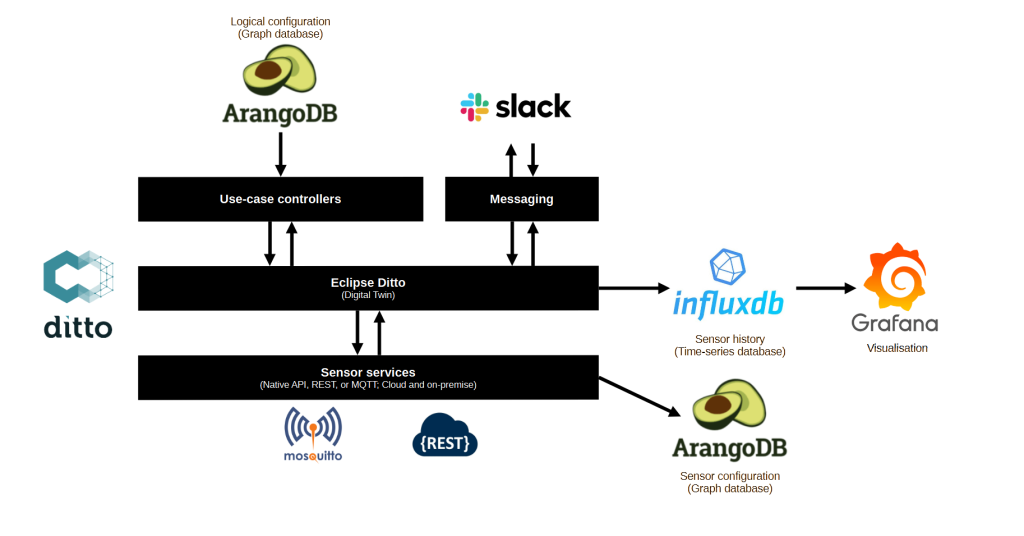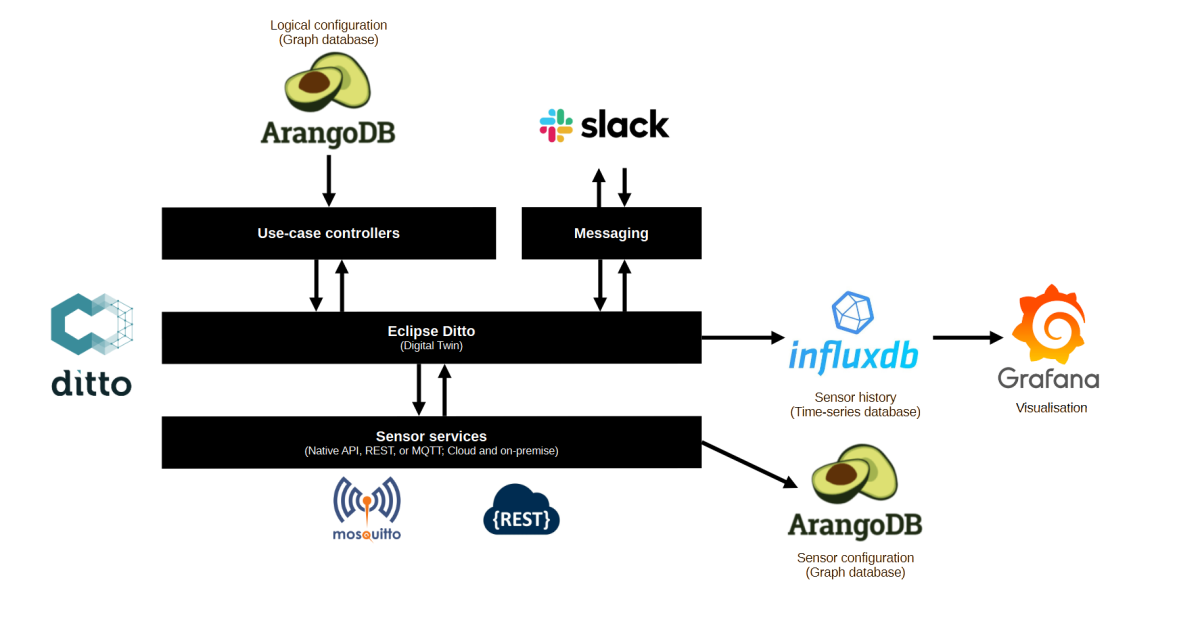This article describes the components that build up the architecture of my (digital) home.
- Logical configuration (ArangoDB): the logical configuration includes the areas (rooms) in the house, the sensors and actors located in those areas, and the “scenes” that can be applied to actors and areas.
- Use-case controllers (custom .NET Core worker services): I’ve build a separate micro service for each use-case, for example, controlling lights, planning washer, dishwasher, and dryer, and planning the generation of domestic hot water.
- Digital Twin (Eclipse Ditto): the Digital Twin stores the state of all connected sensors and is used by the use-case controllers to consume sensor states or push commands back down to the sensors.
- Messaging (Slack): I’m using Slack as a messaging service to interact with my home. Slack informs me on specific state changes in the Digital Twin and I can feed commands in Slack to influence the behavior of my home. I try to minimize this as most decisions should be fully automated.
- Sensor services (custom .NET Core worker services): the sensor services read sensor states via open or proprietary protocols. They are also responsible for pushing commands down to actors.
- Sensor history (InfuxDB): InfluxDB stores the (relevant) history of the Digital Twin as well as the history from the different energy services that feed directly into InfluxDB.
- Sensor configuration (ArangoDB): ArangoDB stores the information needed to communicate with local and cloud-based sensors.
- Visualisation (Grafana): I’m using Grafana as a visualisation front-end.


